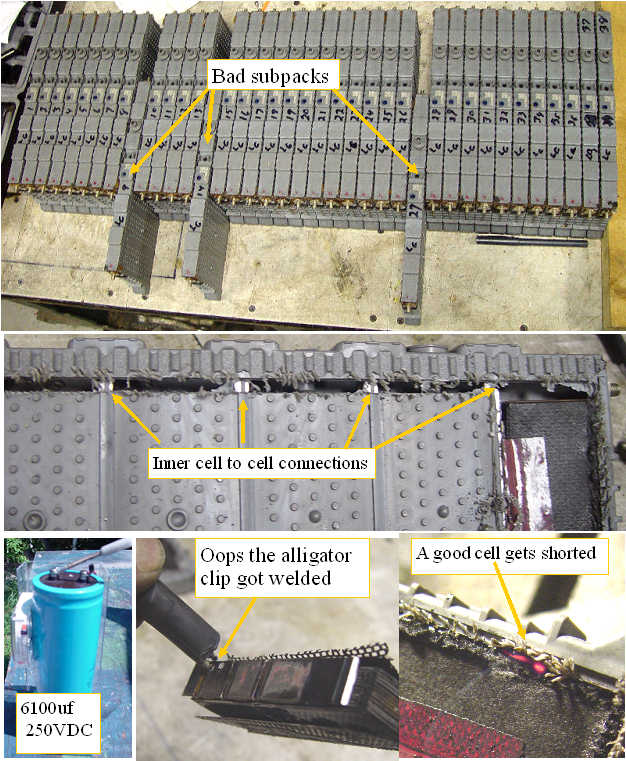A bad Prius subpack explored and fixed????
|
 | |
|
blasting a prius subpack
|
Carolyn Coquillette from Luscious Garage in San Fransisco,
( http://www.lusciousgarage.com/ )was kind enough to send me a first gen Prius battery pack. The pack was bad and the codes indicated two bad subpacks.
Carolyn attended one of the Hybrid classes that I was involved with, and is a highly qualified hybrid auto technician.If you live in the bay area, and have a hybrid, you should consider Luscious Garage for all of your service.
I have not had the opportunity until now to examine a Prius subpack that was actually bad, so I immediately labeled the subpacks, and removed them from the enclosure. A quick voltage test showed two subpacks that were a full 1.2V or more lower than the rest, and one that was about .7V lower.
I put the two bad subpacks on a charger to see if the subpacks would recover, but shortly after the charge seemed to be complete, the subpack dropped back to the same condition, indicating that the subpack likely had a shorted cell.
I used my milling machine to expose the cell to cell connections, and indeed, one cell was at 0 volts while the rest were fully charged.
One must be very careful playing with charged NIMH batteries in a milling machine.
My end mill managed to hit the plates of one of the good cells, and the current lit up the shorted area cherry red.
In my RC modeling days, when a NICAD cell would short, it usually was a symptom of a plate to plate short caused by a nickel whisker.The trick we used to do was to blast away the short by discharging a big capacitor into the cell. Sure enough, I took the shorted cell, and blasted it with 250V from a 6100uf cap, and the cell was able to be charged. Next I took the other subpack with the same problem, and blasted the whole subpack with the same capacitor.
While I do not expect the blasted subpack to be equal to a good subpack, it was nice to see that the initial response was to fix the shorted cell. If ever there were an imbalance condition, this is it. one cell started at zero charge while the rest were fully charged. I will give the subpack some time to equilibrate, and then compare it under load with a good subpack in a series configuration.
While blowing out some plastic chips from the machined subpack, some of the potassium hydroxide electrolyte sprayed past my glasses into my left eye. It burned a bit, and I immediately flushed my eye with a lot of water, and my eye is fine. Batterys are dangerous in many ways.
|
|